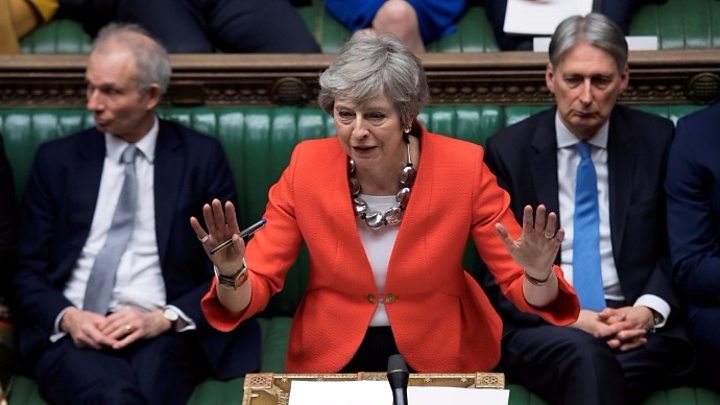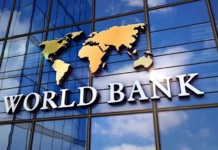The beginning of the end of Theresa May’s Brexit strategy was an emotional address to the nation in which she blamed parliament for the delay in Britain’s departure from the European Union.

The televised speech on March 20 was one of the few times in nearly three years as prime minister that she has followed her instincts rather than the counsel of her closest aides, said a source close to May.
Venting her anger at parliament, which had already rejected her deal twice, she said Britain’s departure had been blocked by political infighting for which she was not responsible.
Her move backfired, spelling the end of attempts to agree terms acceptable to hardline Brexit supporters in her Conservative Party and to Northern Ireland’s Democratic Unionist Party, which props up her minority government.
Twelve days later after another rejection of her deal by parliament, she did the unthinkable. She turned to the opposition Labour Party and its leader, Jeremy Corbyn, for talks to try to secure support for the deal and persuade the EU to give her more time to win parliament’s backing.
For a woman who has spent most of her adult life campaigning for the Conservatives, it was no easy decision. But it underlined May’s shifting ambitions in the pursuit of Brexit.
After promising not to seek a new term as prime minister at the next election, and offering to quit sooner if parliament backs the divorce deal she agreed last year with the EU, her remaining goal is to get a deal through parliament that would allow her to leave with some kind of legacy.
Protecting her party’s fragile unity, damaged by divisions over Brexit, was no longer the prime aim.
“Over the last few days people have been asking me what on earth’s happening with Brexit,” May said in a relaxed video address in a sitting-room at her country residence on Sunday, explaining how her deal could not get through parliament.
“Now there’s lots of things on which I disagree with the Labour Party on policy issues, but on Brexit I think there are some things we agree on … It’ll mean compromise on both sides, but I believe that delivering Brexit is the most important thing for us.”
Authority has slipped away from May in other ways too. Exasperated lawmakers have seized control of important parts of the parliamentary agenda, passing legislation to hem her in.
She has also been forced to turn to an increasingly irritated EU, where leaders meeting on Wednesday will decide on the length of any Brexit delay, while May sits outside the room and awaits their judgement.
It was never meant to be like this. But three years after Britain voted to leave the EU, that decision is mired in uncertainty.
As the prime minister herself says, Britain might never leave – something she believes will betray the voters who backed Brexit in a 2016 referendum, won by a margin of 52-48 percent. It would also spell a failure for her premiership.
But for many, she must shoulder much of the blame for the unravelling of Brexit. From losing her majority in an election she did not need to call to failing to build a consensus around a deal that pandered to both sides of the debate but persuaded neither, May has too often stubbornly stuck to just one plan.
It was always going to be an uphill struggle for the resilient but reserved former Home Secretary who hails from the Conservative Party’s heartlands of southern England.
May took over a party and a country in crisis over Britain’s relationship with the EU – an issue that helped claim the scalps of three Conservative predecessors: David Cameron, John Major and Margaret Thatcher.
May was seen as a steady choice to take over when Cameron quit in the chaos following the referendum.
She had campaigned, albeit lukewarmly, to stay in the EU but swiftly made honouring the referendum result her mission. The hope was that May could appeal to the eurosceptics and the pro-EU MPs in her party.
For months, she papered over the cracks, offering a clean break from EU institutions for Brexit supporters, and close economic ties for remainers.
But by trying to please both sides, she never managed to persuade either to swallow the compromises needed to secure a deal with Brussels.
May won some admiration for soldiering on yet her critics say she lacked the guile to carry her party and see Brexit through.
Many opposition MPs, and more moderate members of her party, say May focused too much on appeasing hardline Conservative eurosceptics and ought to have held cross-party discussions quickly to involve more sides.
“But the failure to do that and this focus on holding the party together, in my view is an unedifying spectacle.” said one former aide.
Her frustration after almost two years of EU talks boiled over in her March 20 TV address.
“You are tired of the infighting. You are tired of the political games and the arcane procedural rows,” she said. “You want this stage of the Brexit process to be over and done with. I agree. I’m on your side.”
The backlash was swift, with some MPs accusing May of encouraging violence against them in an unashamedly populist speech.
It all started to go wrong less than a year after May became prime minister.
When she took over, the Conservatives held a slim majority in parliament. May had always said she wouldn’t call an election to reinforce her legitimacy but by early 2017 she was riding high in the polls and saw an opportunity to boost her majority and, hopefully, make the Brexit process smoother.
She triggered a snap election in June 2017 but it didn’t go well.
May was uncomfortable with a campaign which she thought was trying to make her look presidential but did “not suit her in any way”, the former aide said.
Her poll lead dwindled and while the Conservatives did win the most seats in parliament, May lost her majority and was forced to turn to the Northern Irish Democratic Unionist Party (DUP) to stay in power.
Kindly follow us on twitter:@AfricanVoice2










